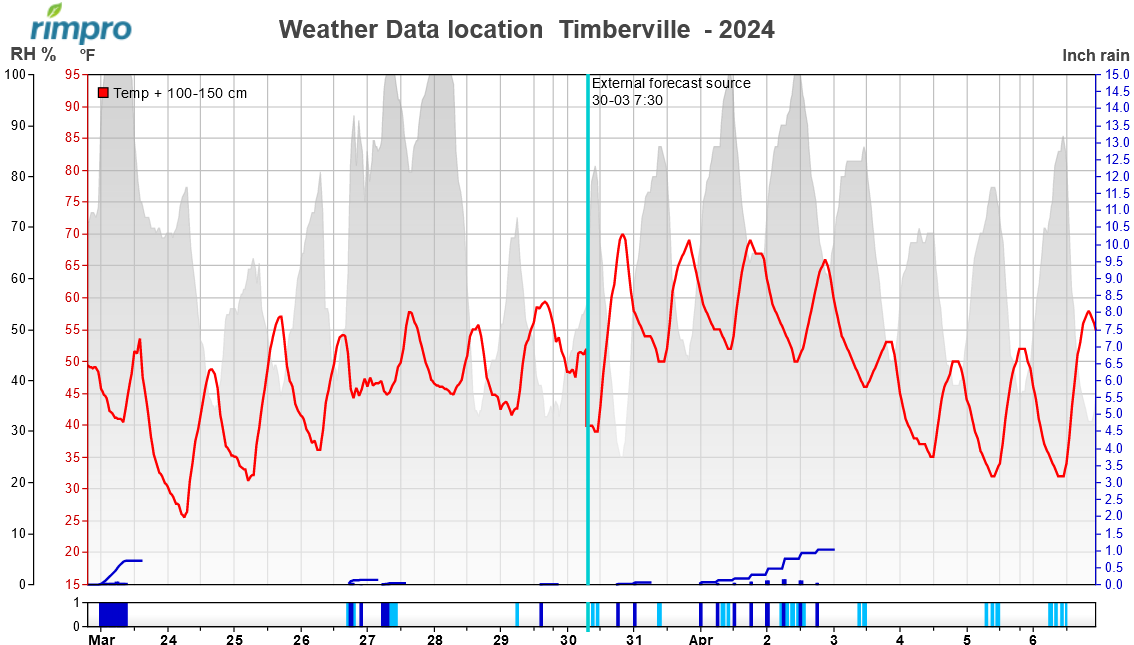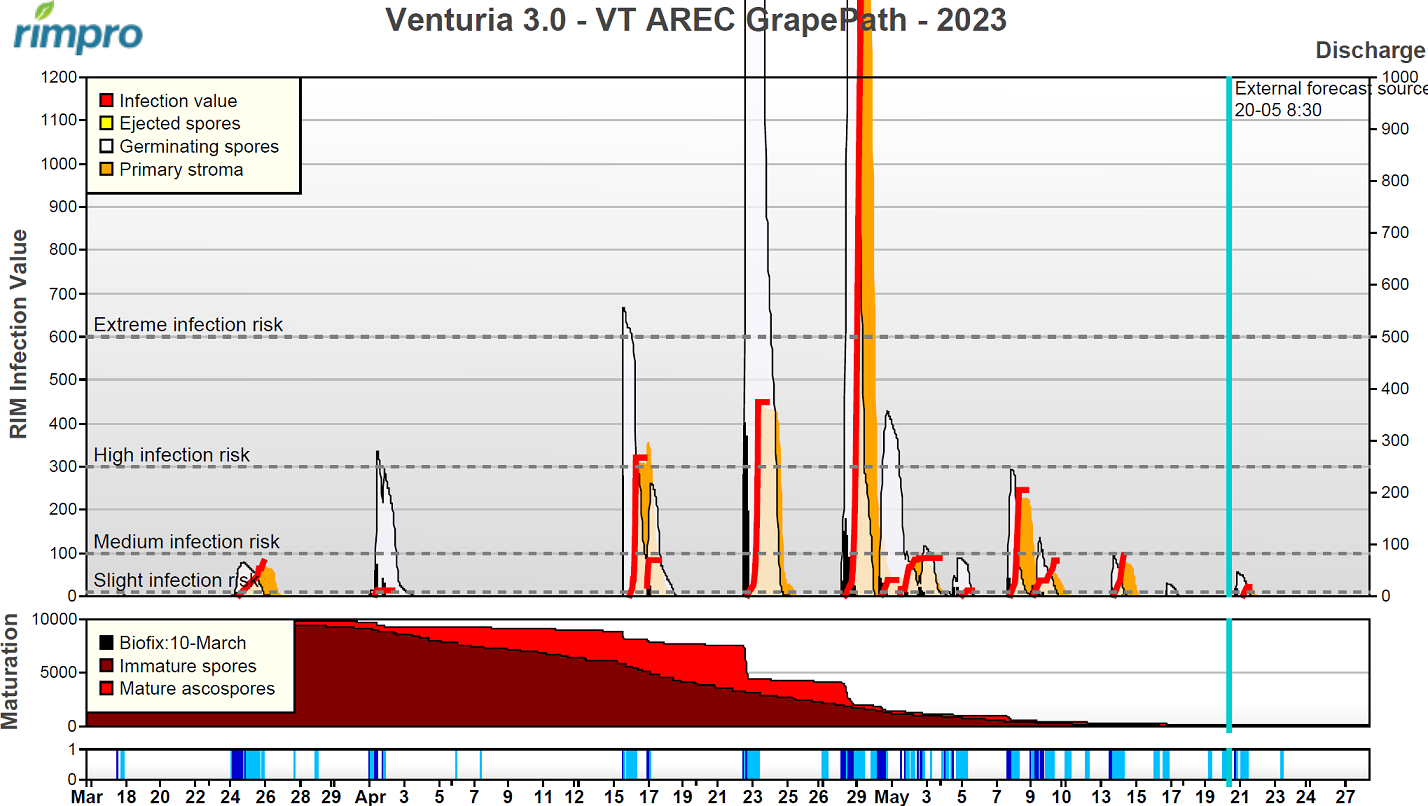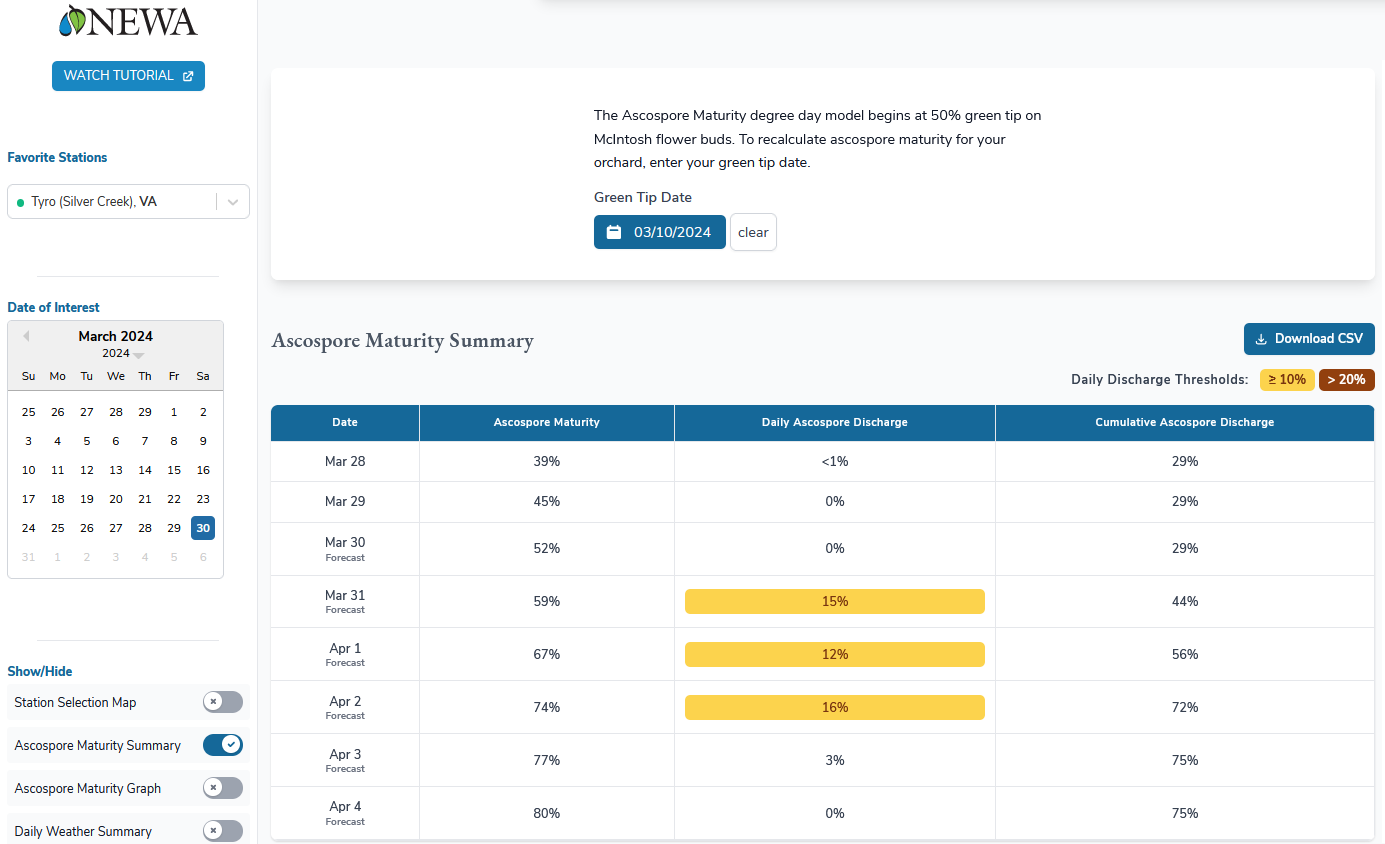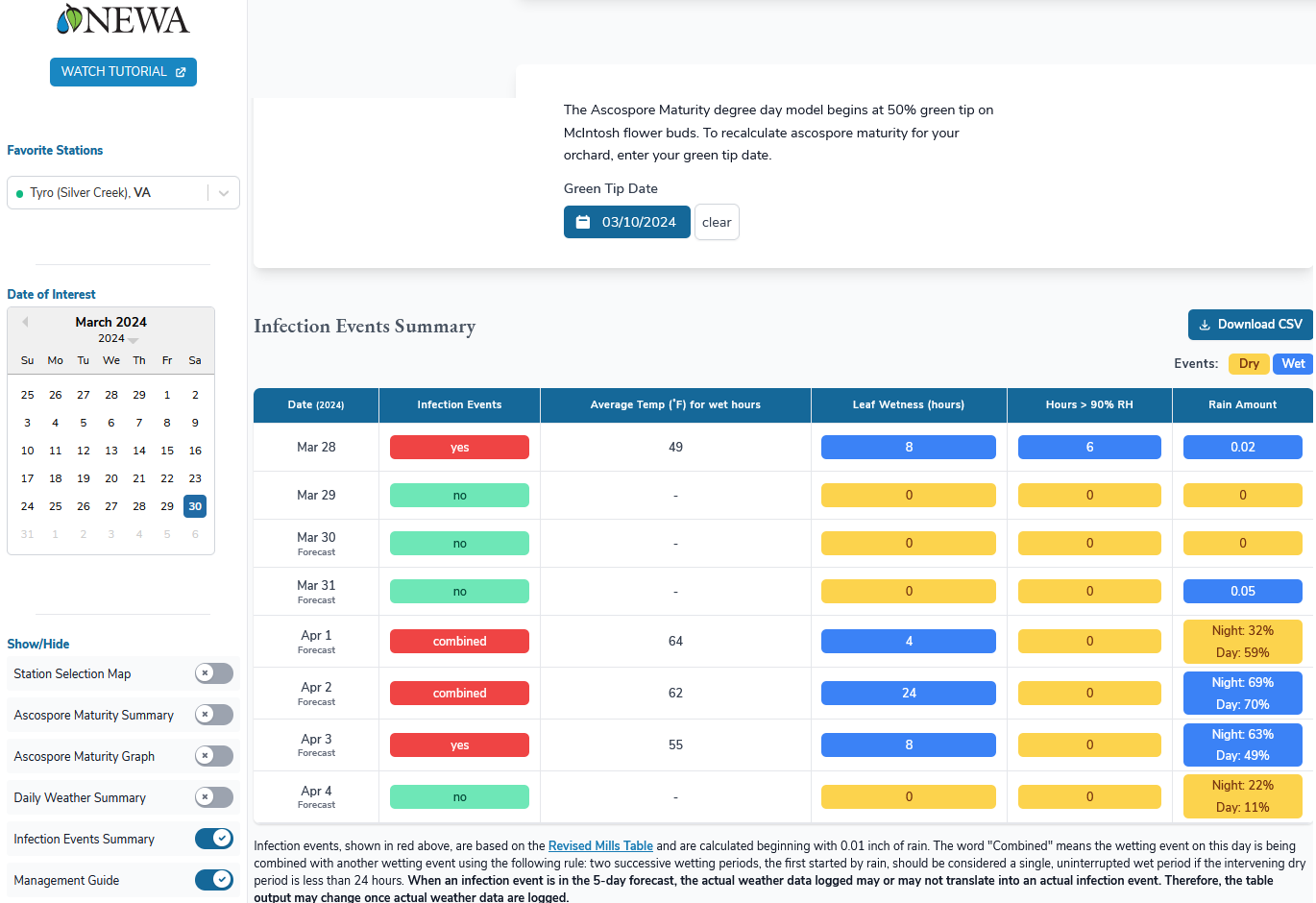First Major Apple Scab Infection Highly Likely in Virginia With Predicted Rains of 1-3 April 2024
First of all, Happy Easter for those of you who celebrate it. I’ve had several great questions sent to me by the growers this morning. If the weather forecast with warm rains predicted for 1-3 April 2024 becomes a reality (Fig. 1), we will get the first major scab apple scab infection in central and northern Virginia (this will be the second infection for southern Virginia). According to RIMpro model these rain events of 1-3 April 2024 warrant a full tank mix of a very effective single-site systemic fungicide plus a multi-site contact fungicide like mancozeb. Unlike the NEWA scab model which is available for free: https://newa.cornell.edu/apple-scab, RIMpro apple scab model, which is subscription based, allows you to have much more accurate scab infection predictions because of the various aspects of Venturia inaequalis biology incorporated in it in the last 28 years. RIMpro apple scab model actually determines the fate of each separate group of released apple scab ascospores in each hour, during these rain events, and gives you Relative Infection Measure i.e. RIM value of how severe the infections for all these groups of spores will be.
Thus by using the RIM infection value prediction with plugged in 5 to 7 days weather forecast, you can gauge your response by applying just a contact fungicide or including with it a systemic fungicide. Just a contact fungicide like mancozeb would be good if the infection is of medium to high strength i.e. from 100-300 RIM Infection Value (Fig. 2 example below for year 2023). A combination of Inspire Super or Excalia or Sercadis or Fontelis plus mancozeb would be necessary if the infection will be high to extreme i.e. 300 RIM Infection Value or higher (Fig. 2 example below for year 2023). The SDHI (Group 7) fungicides I state above will also be very effective also for powdery mildew control. If you use an SDHI fungicide add 10-16 fl oz/100 gal of LI700 to it as this boosts the absorption of SDHI-s into the green tissue and allows longer residual protection throughout the rain events. Most of the apple varieties in Winchester VA are transitioning from Tight Cluster to Pink Bud stage or are already at the Pink Bud stage. In southern Virginia early varieties are already at full, 100% Pink Bud. If you had visible scab symptoms last year in your orchard, you should spray with a fungicide ahead of the early-season predicted scab infection events that are at or above 100 RIM value (e.g. red curved line going to the dashed line of 100 RIM value on the RIMpro graph scale “RIM Infection Value” on the left). RIM value of 100 means that only 1% of seasonal ascospores will be infecting during that wetting event (Fig. 2 below for year 2023).


Right now, if the NWS’s weather forecast stays the same for the actual days of 1-3 April 2024, the RIMpro is calling for an infection of more than 400 to more than 1,200 RIM value, depending on a location, which is high to extreme infection risk for scab. You can only see the real time 2024 RIMpro scab infection predictions if you subscribe to RIMpro: https://www.rimpro.eu/ (note that the Figure 2 above is from 2023 used as an example, not 2024). Hence, as per RIMpro outputs I see as a coordinator of a nation-wide group of RIMpro subscribed apple growers (over 40), these rain events of 1-3 April 2024 in Virginia are warrantying a top-level choice fungicide spray applications for all apple orchards.
Yes, the best way to apply fungicides is before the predicted infection events. If rust is your major concern – check first do you see galls with spikes coming out of them and being gelatinous and orange on the Juniper trees? If not you do not see fully developed galls on cedars, you do not need to use DMI fungicides just yet (Group 3) and SDHI fungicide, instead, with mancozeb is just fine. If you do see galls fully developed, yes use DMI fungicide instead of SDHI and in mix with mancozeb. However, if scab is your major concern, keep watching at the forecast and the aforementioned scab prediction models to see if the weather forecast and thus scab predictions change as we get closer to 1-3 April 2024. I am warmly recommending you to seriously consider subscribing to RIMpro as this is the BEST apple, pear, and grape grower prediction TOOL I have seen in years and which you can use to reduce the number of your seasonal fungicide applications. One subscription to RIMpro and connection fee for one NEWA weather station to RIMpro costs approximately $330 in total. All the largest fruit growers in Virginia are subscribed to RIMpro and I can help you with guiding how to get this process done. If RIMpro is not for you and you will only use NEWA’s apple scab prediction model, major infection events are when there is >15% ascospore discharge predicted. So as you can see below when using NEWA scab model for your weather station of choice, the NEWA scab model agrees with RIMpro that there will be a severe scab infection showing 15, 12, and 16% ascospore discharge predicted with rains on 1-3 April. Sources for below print screens are: NEWA scab model available here: https://newa.cornell.edu/apple-scab


